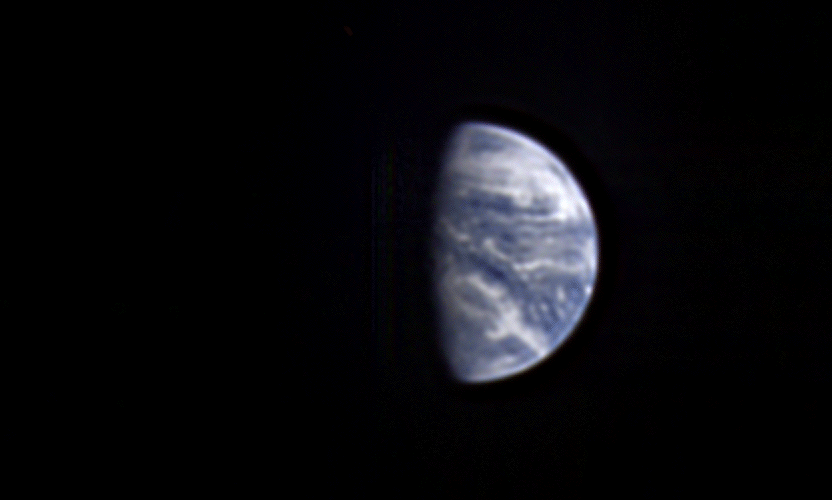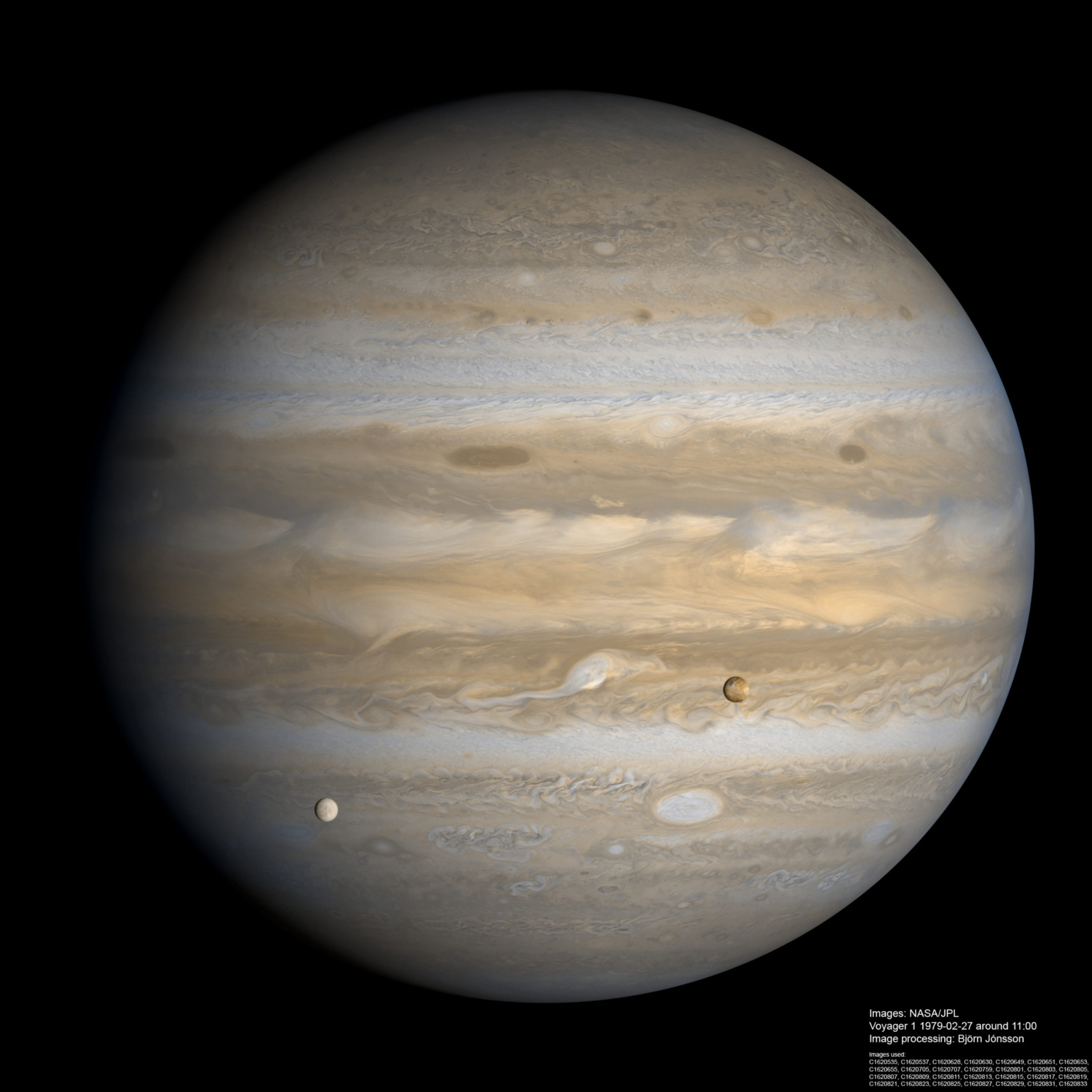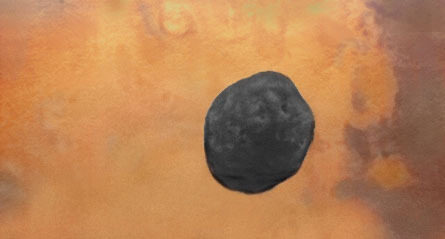Emily Lakdawalla • Feb 21, 2013
Pretty picture: a moon transit
A reader comment on my previous Earth-and-Moon image inspired me to dig up the following photo. The question was: has there ever been a photo of Earth and the Moon showing the latter transiting the former? The answer is yes. It's not the greatest image for a couple of reasons, but it's a unique and priceless view of our home binary planet. And it gets better: it's actually part of a movie.
First, here's a still. Depending upon the brightness of your monitor, you may or may not notice a huge quantity of artifacts in this image, which I'll explain in a moment. Try to ignore the artifacts and enjoy the view of our blue planet and our surprisingly brown moon. It's a little hard to tell the geography from this one image, but it's obvious in the image sequence below.

Here's a sequence of eight images of the Moon transiting Earth. Each image was taken half an hour after the last.

It's clearer here that we're looking at Africa. Now here's the piece de resistance: an animation. I left this for last because it's huge -- hopefully it's downloaded for you by the time you've gotten to this point in the article! It's cool because it's a full 24-hour rotation sequence so it splices beautifully from beginning to end of the animation. Watch carefully for the moment that you see the clouds jump -- that's the boundary between the beginning and end of the imaging sequence.

So what's with all the artifacts? Well, the sequence was shot with Deep Impact's High Resolution Imager, which had a serious problem in its optics: a mirror that did not reach its proper shape when cooled to in-space temperatures. Here's the relevant information on that problem from a Deep Impact press kit:
Tests after launch indicated that the imager's focus was not as expected. Although the focus has improved after the instrument was heated, or "baked out," to remove normal residual moisture, sp atial resolution remains a factor of 3 to 4 less than planned. A "tiger team" of engineers found that the most likely cause of the problem was a mirror that, while flat at room temperature, developed some curvature at the cryogenic temperatures of the thermal-vacuum tests. The team will compensate by using an image processing technique called deconvolution which was also used to improve images from the Hubble Space Telescope before its second camera instrument was installed. The science team is confident that the technique will allow them to recover resolution essentially the same as what was planned before launch.
Deconvolution can only do so much. In particular, it tends to introduce "ringing" artifacts, which are particularly visible in this animation around the limb (edge) of Earth and in the form of a concentric ring on the Moon, particularly when the Moon is crossing Earth's disk. A wonderful thing about this blur problem is that scientists made lemonade from lemons by using the HRI to observe exoplanet transits across distant stars. The camera couldn't resolve the star no matter how sharp its vision was anyway, and by having the star's light spread out across many pixels with the blurred optics, they were actually able to get much more sensitive measurements of the amount that the star's light dimmed with each planetary transit.
So there you go. It's funny that for all the images that we have of moons transiting other planets (some of which I'm including below), this is the only one that I know of where both Earth and Moon appear as full globes, with the Moon transiting Earth.




(Okay, that last one isn't a moon transiting a planet, but that's just semantics.)
Support our core enterprises
Your support powers our mission to explore worlds, find life, and defend Earth. You make all the difference when you make a gift. Give today!
Donate

 Explore Worlds
Explore Worlds Find Life
Find Life Defend Earth
Defend Earth

